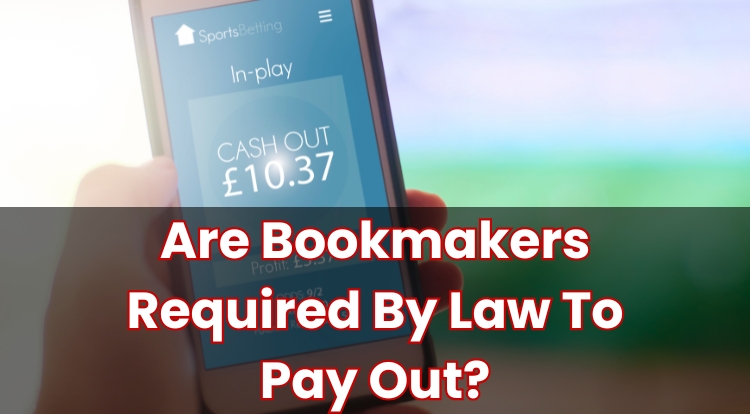Understanding Bookmaker Margins: Overround in Betting Terms
Anyone interested in betting may have come across the phrase “bookmaker margins” or heard about “overround”. But what does this really mean, and why does it appear in the numbers you see for odds?
This blog post looks at what overround involves, how it is worked out, why it appears in odds, and where common misunderstandings arise. Let’s start with the basics.
Read on to learn more.
What Does Overround Mean in Betting?
Overround is a term that appears when bookmakers set their prices. At first glance, it’s just a small addition to the numbers you see. It slightly shifts the odds compared with the pure mathematical chance of each outcome.
For example, think of a fair coin toss: the chance of heads is the same as tails, right? Both are equal, which you might expect to total 100%. Bookmakers often set prices so that the implied totals go a little above that 100% mark. That extra portion is what people call overround.
In simple terms, it’s a tweak in the numbers that affects potential returns on a winning bet. But how exactly is that figure calculated?
How Is Overround Calculated by Bookmakers?
The process is more straightforward than it sounds. You take the odds for each outcome, convert them into an implied probability, then add them together.
The formula is:
Implied Probability (%) = (1 / Decimal Odds) x 100
For instance, if a football match lists odds of 2.00 for both Team A and Team B:
(1 / 2.00) x 100 = 50%
Add both probabilities: 50% + 50% = 100%. But in many markets, the total is slightly higher—say 105%. That extra 5% is the overround.
This calculation changes depending on the sport, market, and even timing of the event. The maths shows the margin exists, but it doesn’t yet explain why it appears in the first place.
Why Do Bookmakers Use Overround in Odds?
That small addition serves several purposes. One is to provide a buffer when the balance of bets isn’t even across all outcomes. Another is to help manage exposure if more hypothetical bets land on one side than another.
It is a way for the bookmaker to adjust the market while keeping it appealing to people placing bets. Even though the overround is just a few percentage points, it subtly influences the numbers that determine potential returns on a winning bet.
Once you see why it appears, it becomes easier to understand its effect on possible winnings.
How Does Overround Affect Your Potential Winnings?
The presence of overround slightly reduces the potential payout compared with what you might expect from pure probabilities. The bigger the margin in the numbers, the smaller the share of the theoretical return you receive if a bet wins.
For example, comparing two markets that look similar, one might total 103% and another 106%. Even though the difference seems small, the lower total generally offers a slightly higher return on a winning bet.
These variations are easy to miss at first glance, but they may add up over multiple bets.
Examples of Overround in Popular Sports Bets
Take a football match with three possible outcomes: home win, draw, or away win. Odds might be:
- Home win: 2.30
- Draw: 3.20
- Away win: 3.40
To check the overround:
- Home win: (1 / 2.30) x 100 = 43.48%
- Draw: (1 / 3.20) x 100 = 31.25%
- Away win: (1 / 3.40) x 100 = 29.41%
Add them together: 43.48% + 31.25% + 29.41% = 104.14%
This 4.14% is the overround. In other words, the market slightly trims potential payouts compared with pure odds. The same approach applies in sports like tennis or horse racing, though the percentages vary depending on how many outcomes there are and how heavily each one is hypothetically backed.
Common Misconceptions About Overround Explained
Some think overround guarantees a profit on every single event, but that isn’t the case. It simply shifts the odds so that, across a series of hypothetical bets, the market stays balanced even if some outcomes are more popular than others.
Others believe overround is hidden or unfair. In reality, it’s transparent—you can calculate it yourself using the method shown above. It’s part of the pricing, reflecting both operational costs and the need to handle uneven hypothetical stakes.
Not every market has the same overround. Popular events might have smaller percentages, while niche markets or certain timing conditions may show higher totals. Even a few points’ difference may subtly affect the returns over a string of bets.
If you choose to place any bets, follow responsible gambling guidelines. Only use money you might afford to lose, take breaks, and treat betting as occasional entertainment rather than a constant activity.
If gambling begins to affect your well-being or finances, seek help promptly. Independent organisations such as GamCare and GambleAware provide free, confidential support for anyone who needs it.
**The information provided in this blog is intended for educational purposes and should not be construed as betting advice or a guarantee of success. Always gamble responsibly.





